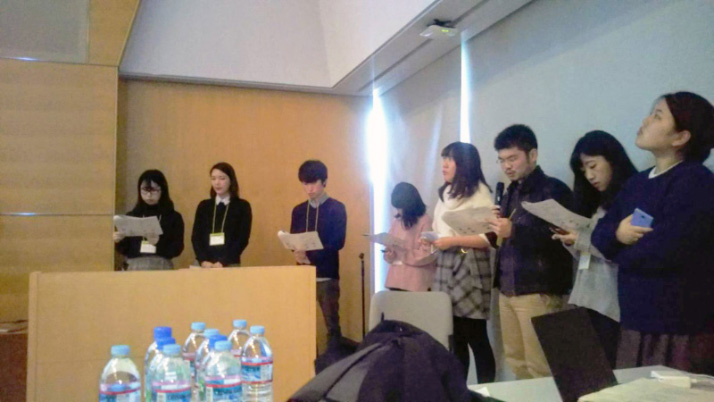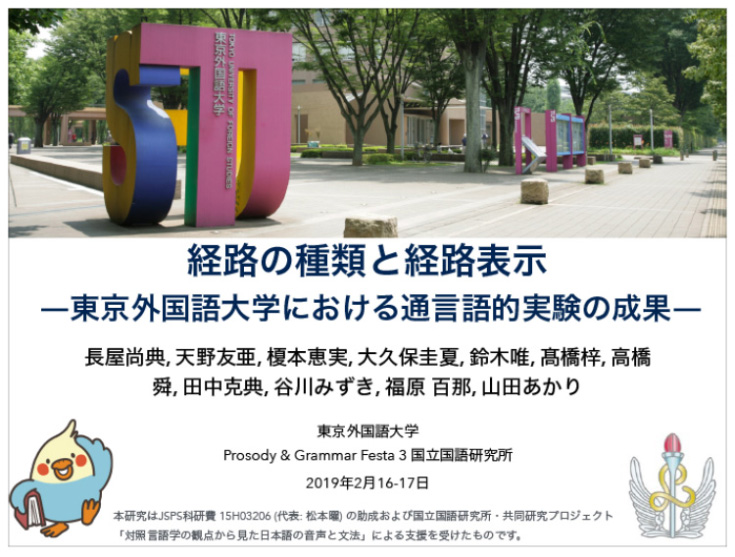TUFS Students Present their Research at the National Institute for Japanese Language and Linguistics
February 26, 2019
From Saturday, February 16 to Sunday, February 17, 2019, the third collaborative research meeting Prosody and Grammar Festa 3 for Cross-linguistic Studies of Japanese Prosody and Grammar was held at the National Institute for Japanese Language and Linguistics (NINJAL) in Tachikawa city, Tokyo. Here, a research team consisting of TUFS students and advising teacher of the Linguistic Typology seminar (School of Language and Culture Studies, Language and Information course) shared their research results.
Those who made presentations, all belonging to the School of Language and Culture Studies, were AMANO Yua (third year majoring in Vietnamese), ENOMOTO Emi (fourth year majoring in Turkish), OKUBO Keika (fourth year majoring in Czech), SUZUKI Yui (fourth year majoring in Turkish), TAKAHASHI Azusa (third year majoring in Czech), TAKAHASHI Shun (third year majoring in Arabic), TANAKA Katsunori (third year majoring in Spanish), TANIGAWA Mizuki (third year majoring in Italian), FUKUHARA Mona (third year majoring in Vietnamese), YAMADA Akari (third year majoring in Laotian), and Associate Professor NAGAYA Naonori (Graduate School of Global Studies, in charge of the School of Language and Culture).
The motion expressions project at NINJAL (led by NINJAL Professor MATSUMOTO Yo) aims to understand the motion event descriptions of world languages and their path types using a video-based cross-linguistic experimental method.
Nine languages that were studied in the seminar were used for the cross-linguistic experiment and presented in this presentation named “Path Types and Codings - Results of a Cross-Linguistic Experiment at Tokyo University of Foreign Studies”. Based on experiments on Arabic-Moroccan dialects, Korean, Spanish, Tagalog, Czech, Turkish, Norwegian, Vietnamese, and Laotian, the students analysed how the pathways were realized in each language and proposed what common-linguistic generalizations could be made from them.
In carrying out this research project, more than 100 native speakers from Japan and abroad participated in the experiments, both in Japan and in their countries. The research team would like to thank the local people, the Japanese community and the international students at TUFS for their cooperation in the experiments.
The results of the research will be published as a graduation thesis or journal article.


